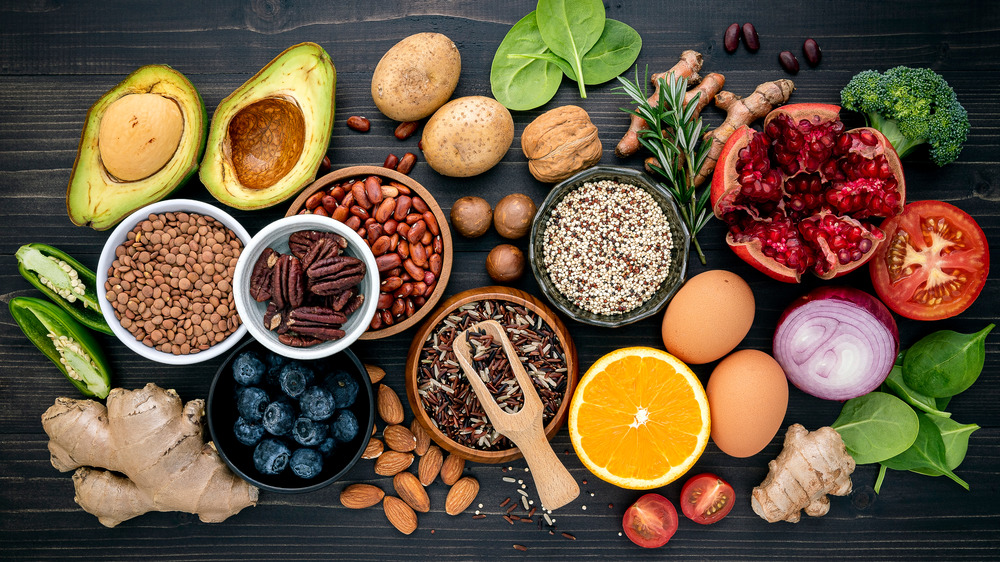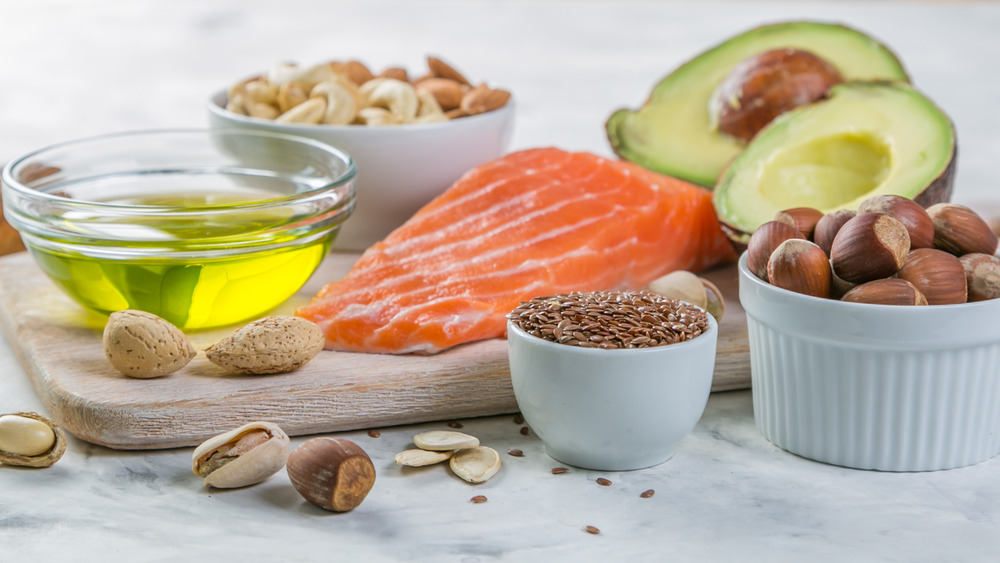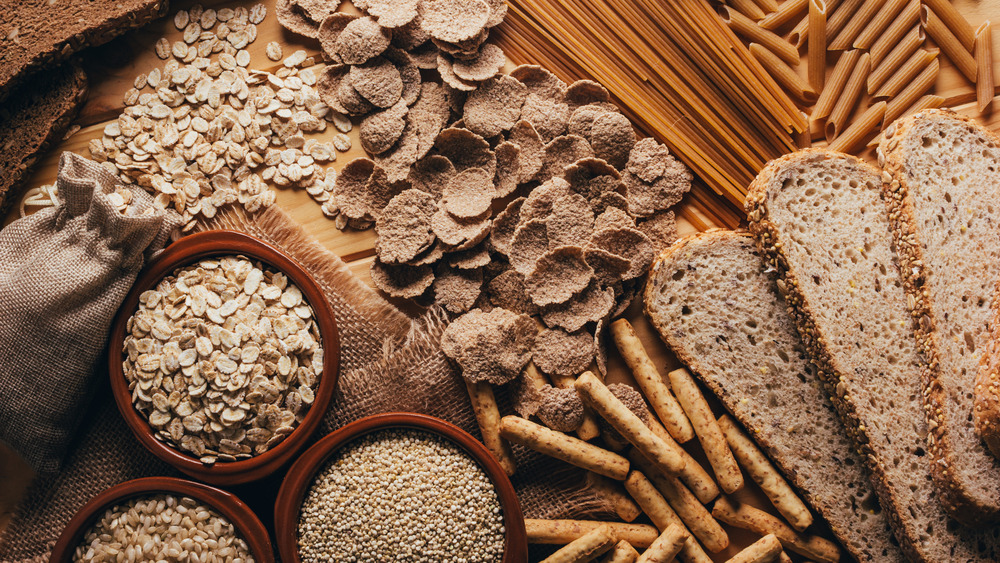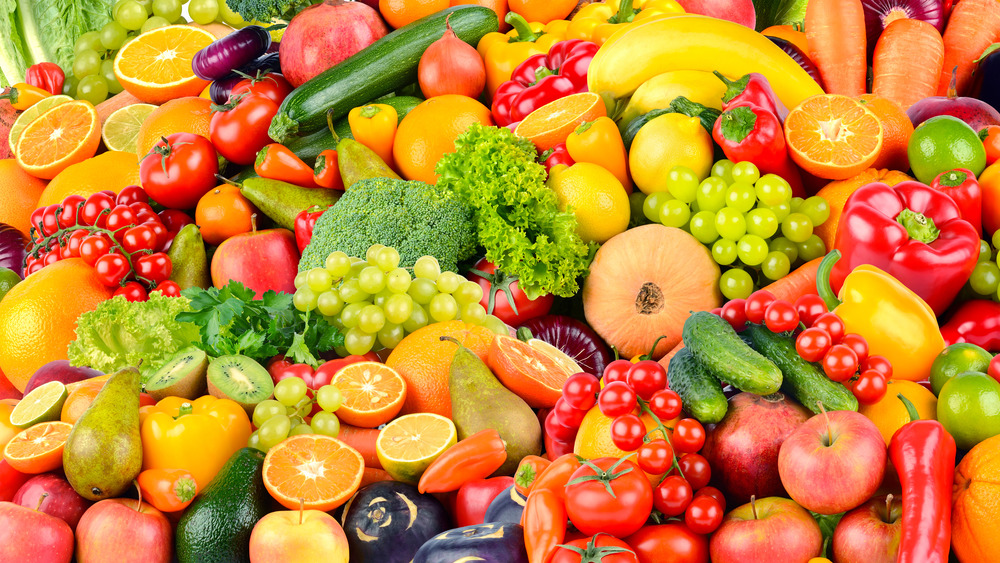These Types Of Food Can Help Reduce Sugar Cravings
Whether after dinner or as a midday snack, everyone has had that moment where they are craving something devilishly sweet, tasty, and sugary. From munching on a fruity Jolly Rancher candy during a meeting to ordering a vanilla bean crème brûlèe, sugar is something that the body oftentimes just craves. As people age, breaking that sugar habit can be something of a nuisance for many, but according to an Eat This, Not That report, that sugar craving that your body sends surging through your system could be connected to a deeper issue. What does this mean exactly?
Well, your sugar cravings could be your body's way of telling you that you are low in magnesium. Which is no surprise, according to Susan Yanovski, MD, of the National Institute of Diabetes and Digestive and Kidney Diseases. She tells the publication that nearly 80 percent of adults within the United States aren't getting enough of this important nutrient through conventional diets alone. Eat This, Not That relates that low levels of magnesium affect your body's ability to keep your bones, heart, digestion, and overall cellular health functioning in tip-top shape. The simplest way to remedy this? By eating more magnesium-rich foods.
Look for foods that are rich in healthy fats
Everyone is already aware of many of the benefits of incorporating and consuming more healthy fats in their diets. Healthline recommends adding more foods like avocados, nuts, and fatty fish. The report says that one medium avocado could hold up to 58 mg of magnesium as well as other things like potassium, B vitamins, and fiber. Healthline reports that nuts like almonds, cashews, and Brazil nuts could also work well as a supplemental snack when looking to up your daily magnesium count. In addition to their healthy dose of magnesium, nuts also have a lot of anti-inflammatory properties as well. When it comes to fatty fish, salmon, halibut, and mackerel are the way to go, the publication asserts. About half a fillet of salmon can have up to 13 percent of daily recommended amount, while half a fillet of halibut can have about 18 percent of daily recommended amount (via Healthline and Fitbit).
Consume more whole wheat foods and grains
According to Medical News Today, regular whole grains are a great source of the much needed nutrient, but whole wheat grains are what you should be looking for next time you visit the supermarket. Whole wheat flour and grains can pump your body up with as much as 160 mg of magnesium per cup. The Cleveland Clinic says that things like two slices of whole wheat bread can hold up to 46 mg of the nutrient, while half a cup of cooked brown rice provides the body with up 42 mg of the nutrient as well.
Healthline adds that oats, barley, buckwheat, and quinoa work well as additional sources of magnesium, as a one-ounce serving of buckwheat can pack about 65 mg of the nutrient. Along with magnesium, these grains also carry B vitamins, selenium, and tons of fiber, and are said to help the body decrease overall inflammation and lower the risk for other diseases like cardiovascular disease.
Munching on more fruits and veggies can also help
It's known that fruits and vegetables are a necessary part of any varied and nutritional diet. Federal guidelines from the Center for Disease Control suggests that adults consume about one-and-a-half to two cups of fruits and two to three cups of vegetables daily. Everyday Health says that incorporating a lot of leafy greens into the mix, things like baby spinach, collard greens, kale, and even Swiss chard, can all provide the body with healthy amounts of magnesium. The publication also states that adding a cup of raw kale to your daily diet can provide the body with up to 1.7 percent of the recommended daily value (about 7 mg). Medical News Today adds that one cup of cooked spinach also carries a healthy dose of 157 mg, as well. Healthline tells us that simply eating one large banana a day can supply the body with up to 37 mg of magnesium per serving, in addition to all the other added benefits this fruit carries. The Cleveland Clinic adds that additional fruits and veggies like raisins, apples, carrots, and broccoli can serve as great sources as well.



